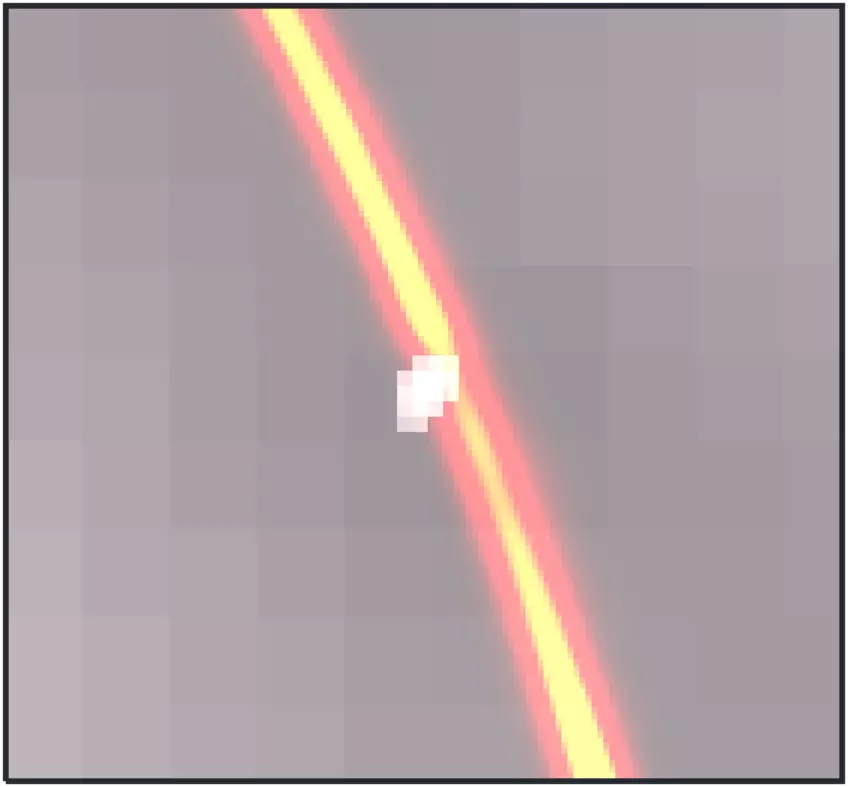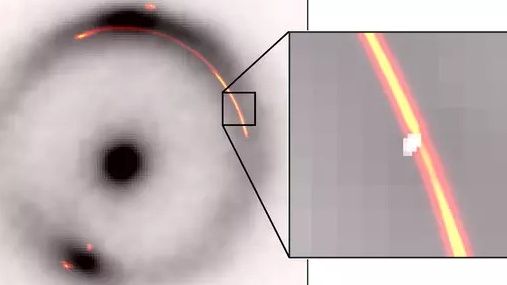A “dark object” detected as an anomalous gash in the arc of a gravitationally distorted section of space could be the smallest cluster of pure dark matter ever discovered.
If so, this would further validate the concept of cold dark matter and will help constrain the properties of dark matter particles as physicists and astronomers continue to search for what exactly the invisible substance is made of.
“The search for dark objects that do not appear to emit light is clearly a challenge,” Devon Powell of the Max Planck Institute for Astrophysics in Germany said in a study. statement.
The discovery came while scientists were observing an Einstein ring. It is the most spectacular form of gravitational lens in which the gravity of an object in the foreground – in this case a massive elliptical galaxy – distorts space. The light of a background galaxyalmost perfectly aligned with the elliptical galaxy and our line of sight, forms an almost complete ring around the foreground galaxy.
Combining the power of radio telescopes from around the world, including the European Very Long Baseline Interferometric Array of radio telescopes in Europe, Asia, South Africa and Puerto Rico, as well as the Green Bank Telescope in West Virginia in the United States and the Very Long Baseline Array in Hawaii, provided astronomers with an instrument with a baseline almost as large as Earth.
The larger the baseline, the smaller the visible details.
Astronomers led by John McKean of the University of Groningen, the University of Pretoria and the South African Radio Astronomy Observatory, and Devon Powell of the Max Planck Institute for Astrophysics in Germany, aimed to resolve the lens image of a compact symmetric object (CSO). This is an object, such as an asset supermassive black holewhich produces relatively little (less than 3,200 light years) radio emission lobes.
The team managed to identify the OSC, but in doing so, they spotted something even more tempting. The data had to be analyzed with algorithms running on supercomputers that could produce a “gravitational image,” which essentially maps out where gravity is. Close inspection of the gravitational image revealed something surprising: a notch in the radio emission arc belonging to the CSO and its host galaxy. This notch can only be produced by another object located between the background and foreground galaxies and with a mass a million times greater than ours. sun.
There are two explanations. One is that it is an inactive dwarf galaxy while the other, given that the object appears completely dark, is that it is a relatively small cluster of dark matter: the smallest ever observed alone, by a factor of 100, located 10 billion light years away.
“Given the sensitivity of our data, we expected to find at least one dark object, so our discovery is consistent with the so-called cold dark matter theory on which much of our understanding of galaxy formation is based,” Powell said. “Having found one, the question now is whether we can find more and whether the numbers match the models.”

Cold dark matter is the main model of dark matter, which posits that it is made up of low-energy particles that can stick together thanks to their mutual gravity. If dark matter were “hot,” that is, rich in energy, it would not be able to clump together because all of its particles would be moving through space at almost the same speed. speed of lightas neutrinos TO DO.
The question has always been: how small can clumps of cold dark matter get? And can small clusters of dark matter exist without forming? stars inside them? The size of the smallest dark matter clusters can therefore impose constraints on the properties of dark matter particles.
“Finding low-mass objects like this is key to learning more about the nature of dark matter,” said team member Chris Fassnacht from the University of California, Davis.
The results are described in two articles, one in Natural astronomy discussing the dark object, and one in Monthly Notices of the Royal Astronomical Society focusing on CSOs.









